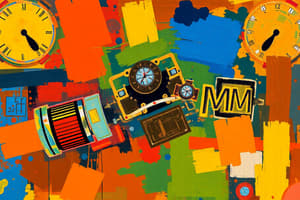Podcast
Questions and Answers
When is calibration typically required for an instrument or sensor?
When is calibration typically required for an instrument or sensor?
- Only when the instrument or sensor has been modified or repaired
- When there are discrepancies between the measurements of the instrument or sensor and those of a reference device (correct)
- When the instrument or sensor has been used beyond its recommended operating time
- Whenever there is a sudden change in ambient temperature
What is the primary purpose of calibration?
What is the primary purpose of calibration?
- To make the instrument or sensor more sensitive
- To fix issues with the instrument or sensor after repairs
- To increase confidence in the validity of the measurements (correct)
- To extend the operating life of the instrument or sensor
Under what circumstances would calibration be required for an instrument or sensor?
Under what circumstances would calibration be required for an instrument or sensor?
- After a specified usage period has elapsed or when surrogate instrument output differs (correct)
- Only after modifications or repairs to the instrument or sensor
- Only when the instrument or sensor is brand new
- Whenever the instrument or sensor is used in a new environment
What pre-existing conditions might necessitate calibration for an instrument or sensor?
What pre-existing conditions might necessitate calibration for an instrument or sensor?
How is calibration typically performed?
How is calibration typically performed?
Flashcards are hidden until you start studying



